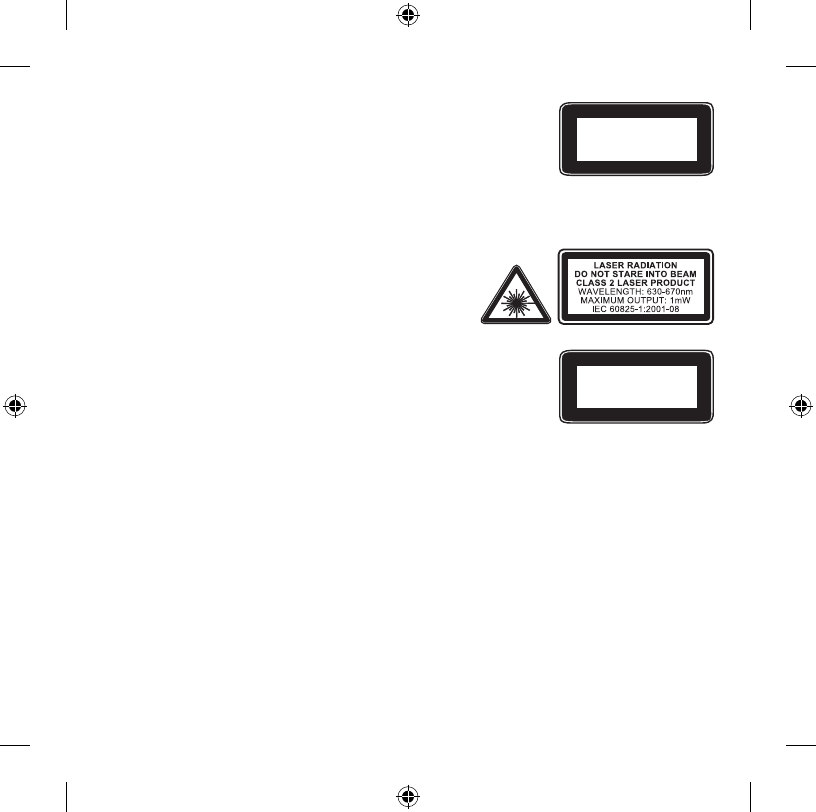Microsoft 1073 Microsoft® Wireless Entertainment Keyboard 7000 User Manual 1
Microsoft Corporation Microsoft® Wireless Entertainment Keyboard 7000 Users Manual 1
Contents
- 1. Users Manual 1
- 2. Users Manual 2
Users Manual 1

1
Microsoft Product Guide
Read this guide for important safety and health information and the terms of the Warranty that apply to
the Microsoft® device that you have purchased.
Warning Failure to properly set up, use, and care for this product can increase the risk of serious
injury or death, or damage to the device or devices. Read this guide and keep all printed guides for
future reference. For replacement guides, go to www.microsoft.com/hardware or refer to the Customer
Support Options section for contact information.
This document includes important information about many Microsoft products. Refer to sections that
apply to the features of your device:
Important Safety Information
AC-Powered Devices
Battery-Powered Devices
Headset Devices
Wireless Devices
Keyboard and Mouse Devices
Devices with Laser Pointers
All Devices
Laser and LED Specications
Regulatory Information
Radio Frequency Technical Specications
Radio and TV Interference Regulations
Disposal of Waste Electrical and Electronic Equipment
Patent Information
Customer Support Options
This symbol identies safety and health messages in this Product Guide and other
product manuals.
Important Safety Information
AC-Powered Devices
These precautions apply to all products that plug into a standard wall power outlet.
Failure to take the following precautions can result in serious injury or death from electric shock or
re or in damage to the device.
1006 PartNo.X12-29435-03
M
X12-29435-03_Mnl_Product_Guide_w1 1 10/3/2006 11:13:39 AM

2
● Remove the batteries if they are worn out or before storing your device for an extended period of time.
● Always remove old, weak, or worn-out batteries promptly and recycle or dispose of them in accordance
with Local and National Disposal Regulations.
● If a battery leaks, remove all batteries, taking care to keep the leaked uid from touching your skin
or clothes. If uid from the battery comes into contact with skin or clothes, ush skin with water
immediately. Before inserting new batteries, thoroughly clean the battery compartment with a damp
paper towel, or follow the battery manufacturer’s recommendations for cleanup.
Disposable (non-rechargeable) batteries only:
● Caution Risk of explosion if battery is replaced by an incorrect type. Use and replace only with the
correct size and type (alkaline, zinc-carbon, or zinc-chloride) of batteries.
Rechargeable batteries only:
● Caution Risk of explosion if battery is replaced by an incorrect type. Use and replace only with the same
type and rating as the batteries provided.
● Charge only with the recharger provided with the product.
Headset Devices
Extended exposure to high volumes when using a headset may result in temporary or permanent
hearing loss.
Wireless Devices
Before boarding any aircraft or packing a wireless device in luggage that will be checked, remove the
batteries from the wireless device or turn the wireless device off (if it has an on/off switch). Wireless devices
can transmit radio frequency (RF) energy, much like a cellular telephone, whenever batteries are installed
and the wireless device is turned on (if it has an on/off switch).
Keyboard and Mouse Devices
Health Warning
Use of a keyboard or mouse may be linked to serious injuries or disorders.
When using a computer, as with many activities, you may experience occasional discomfort in your hands,
arms, shoulders, neck, or other parts of your body. However, if you experience symptoms such as persistent
or recurring discomfort, pain, throbbing, aching, tingling, numbness, burning sensation, or stiffness,
DO NOT IGNORE THESE WARNING SIGNS. PROMPTLY SEE A QUALIFIED HEALTH PROFESSIONAL,
even if symptoms occur when you are not working at your computer. Symptoms like these can be associated
with painful and sometimes permanently disabling injuries or disorders of the nerves, muscles, tendons, or
other parts of the body. These musculoskeletal disorders (MSDs) include carpal tunnel syndrome, tendonitis,
tenosynovitis, and other conditions.
While researchers are not yet able to answer many questions about MSDs, there is general agreement that
many factors may be linked to their occurrence, including: overall health, stress and how one copes with it,
medical and physical conditions, and how a person positions and uses his or her body during work and other
activities (including use of a keyboard or mouse). The amount of time a person performs an activity may also
be a factor.
X12-29435-03_Mnl_Product_Guide_w2 2 10/3/2006 11:13:39 AM

3
To select an appropriate power source for your device:
● Use only the power supply unit and AC power cord that came with your device or that you received from
an authorized repair center.
● Conrm that your electrical outlet provides the type of power indicated on the power supply unit (in
terms of voltage [V] and frequency [Hz]). If you are not sure of the type of power supplied to your home,
consult a qualied electrician.
● Do not use non-standard power sources, such as generators or inverters, even if the voltage and
frequency appear acceptable. Only use AC power provided by a standard wall outlet.
● Do not overload your wall outlet, extension cord, power strip, or other electrical receptacle. Conrm
that they are rated to handle the total current (in amps [A]) drawn by the device (indicated on the power
supply unit) and any other devices that are on the same circuit.
To avoid damaging the power cords and power supply:
● Protect the power cords from being walked on.
● Protect cords from being pinched or sharply bent, particularly where they connect to the power outlet,
the power supply unit, and the device.
● Do not jerk, knot, sharply bend, or otherwise abuse the power cords.
● Do not expose the power cords to sources of heat.
● Keep children and pets away from the power cords. Do not allow them to bite or chew on them.
● When disconnecting the power cords, pull on the plug—do not pull on the cord.
If a power cord or power supply becomes damaged in any way, stop using it immediately. Unplug your
device during lightning storms or when unused for long periods of time.
For devices with an AC power cord that connects to the power supply, always connect the power cord
according to the following instructions:
1 Plug the AC power cord into the power supply until it stops.
2 Plug the other end of the AC power cord into the wall outlet.
Battery-Powered Devices
These precautions apply to all products that use rechargeable or disposable batteries.
Improper use of batteries may result in battery uid leakage, overheating, or explosion. Released battery
uid is corrosive and may be toxic. It can cause skin and eye burns, and is harmful if swallowed.
To reduce the risk of injury:
● Keep batteries out of reach of children.
● Do not heat, open, puncture, mutilate, or dispose of batteries in re.
● Do not mix new and old batteries or batteries of different types (for example, carbon-zinc and
alkaline batteries).
● Do not allow metal objects to touch the battery terminals on the device; they can become hot and
cause burns.
X12-29435-03_Mnl_Product_Guide_w3 3 10/3/2006 11:13:39 AM

4
Class 1 Laser Devices
Beam description: Collimated (parallel) beam of infrared light (invisible to
the user)
Laser power output: < 716 microwatts (at 832 nanometers) to 834 microwatts
(at 865 nanometers)
Emitted laser wavelength: nominal: 850 nanometers, range: (832 – 865
nanometers)
A Class 1 laser product is safe under reasonably foreseeable conditions of operation as described by IEC
60825-1 and 21 CFR 1040.10. However, it is recommended that you not direct the laser beam (which is
emitted from the bottom of the device) at anyone’s eyes.
Class 2 Laser Devices
Beam description: Collimated (parallel) beam of light
Laser power output: < 1 milliwatt
Emitted laser wavelength: 630 – 670 nanometers
This optical device has no serviceable parts. The Class 2 laser
beam is emitted from the front of the device.
Optical (LED) Devices
This product has been evaluated to comply with International Standard IEC
60825-1:1993/A2:2001.
This product uses LEDs that are inherently Class 1.
Regulatory Information
Tested to comply with FCC (U.S. Federal Communications Commission) Standards. For home or ofce use.
Not intended for use in machinery, medical, or industrial applications. Any changes or modications not
expressly approved by Microsoft could void the user’s authority to operate this device. This product is for use
with NRTL-Listed (UL, CSA, ETL, etc.), and/or IEC/EN 60950 compliant (CE marked) Information Technology
equipment. No serviceable parts included.
This device is rated as a commercial product for operation at +41ºF (+5ºC) to +95ºF (+35ºC).
This Class B digital apparatus complies with Part 15 of the U.S. Federal Communications Commission
(FCC) rules, Canadian ICES-003, RSS-Gen, RSS-210, and RSS-310. Operation is subject to the following two
conditions: (1) this device may not cause interference, and (2) this device must accept any interference
received, including interference that may cause undesired operation.
The term “IC:” before the certication/registration number only signies that the Industry Canada technical
specications were met.
Cet appareil numérique de la classe B est conforme aux normes NMB-003, CNR-Gen, CNR-210 et CNR-310
du Canada. Son fonctionnement est assujetti aux deux conditions suivantes : (1) Cet appareil ne peut pas
provoquer d’interférences nuisibles et (2) cet appareil doit accepter toute interférence reçue, y compris les
interférences pouvant entraîner un fonctionnement non désiré.
L’expression « IC : » avant le numéro d’homologation/enregistrement signie seulement que les
spécications techniques édictées par Industrie Canada ont été respectées.
CLASS 1
LASER PRODUCT
IEC 60825-1:2001-08
Class 1 LED product
X12-29435-03_Mnl_Product_Guide_w4 4 10/3/2006 11:13:39 AM

5
Some guidelines that may help you work more comfortably with your computer and possibly reduce your
risk of experiencing an MSD can be found in the “Healthy Computing Guide” installed with this device’s
software. If this device did not come with software, you can access the “Healthy Computing Guide” at
www.microsoft.com/hardware or (in the United States only) by calling (800) 360-7561 to request a CD at
no charge.
If you have questions about how your own lifestyle, activities, or medical, or physical condition may be
related to MSDs, see a qualied health professional.
Devices with Laser Pointers
Caution Use of controls or adjustments, or performance of procedures other than those specied herein
may result in hazardous radiation exposure.
● Do not stare into beam.
● Do not shine a laser pointer at anyone. Laser pointers are designed to illuminate inanimate objects.
● Do not allow minors to use a pointer unsupervised. Laser pointers are not toys.
● Do not point a laser pointer at a mirror-like (reective) surface. A reected beam can act like a direct
beam on the eye.
● Do not disassemble the device.
● Do not use the device outside of its specied operating temperature range +41ºF (+5ºC) to +95ºF
(+35ºC). If the device is exposed to an environment outside of its prescribed operation, turn off
the device and allow the temperature to stabilize within the specied operating range before using
the device.
All Devices
Do Not Attempt Repairs
Do not attempt to take apart, open, service, or modify the hardware device or power supply. Doing so could
present the risk of electric shock or other hazard. Any evidence of any attempt to open and/or modify the
device, including any peeling, puncturing, or removal of any of the labels, will void the Limited Warranty.
Laser and LED Specications
Caution Use of controls or adjustments, or performance of procedures other than those specied herein
may result in hazardous radiation exposure.
Laser Devices
This device complies with International Standard IEC 60825-1:2001-08 for a Class 1 and Class 2 laser product.
This device also complies with 21 CFR 1040.10 and 1040.11 except for deviations pursuant to Laser Notice
No. 50, dated July 26, 2001.
X12-29435-03_Mnl_Product_Guide_w5 5 10/3/2006 11:13:39 AM

6
● If necessary, ask your computer dealer or an experienced radio-TV technician for more suggestions.
For more information about interference issues, go to the FCC Web site at:
http://www.fcc.gov/cgb/consumerfacts/interference.html.
You can also call the FCC at 888-CALL FCC to request Interference and Telephone Interference
fact sheets.
For Bluetooth and 2.4 GHz devices only: To comply with FCC RF exposure requirements, the following
operating congurations must be satised: the antenna has been installed by the manufacturer and no
changes can be made. The wireless devices must not be co-located or operating in conjunction with any
other antenna or transmitter. Except for headset and handheld devices, wireless devices must be at least 20
cm between the antenna of the wireless device and all persons.
Microsoft Corporation; One Microsoft Way; Redmond, WA 98052-6399; U.S.A.
United States: (800) 426-9400; Canada: (800) 933-4750
Disposal of Waste Electrical and Electronic Equipment in the European
Union and Other Countries/Regions with Separate Collection Systems
This symbol on the product or its packaging means that this product must not be disposed of with
your household waste. Instead, it is your responsibility to hand this over to an applicable collection
point for the recycling of electrical and electronic equipment. This separate collection and recycling will
help to conserve natural resources and prevent potential negative consequences for human health and
the environment, which inappropriate disposal could cause due to the possible presence of hazardous
substances in electrical and electronic equipment. For more information about where to drop off your
electrical and electronic waste, please contact your local city/municipality ofce, your household waste
disposal service, or the shop where you purchased this product. Contact weee@microsoft.com for additional
information on disposal of waste electrical and electronic equipment (WEEE).
Patent Information
United States and/or international patents pending.
Customer Support Options
If you have a question about your Microsoft hardware product, do the following:
● Check the system requirements for your product (located on the packaging) to ensure that your system
is compatible.
● For complete product information, see the on-screen Help le installed with the device software.
● For the latest product information and software updates, go to the Microsoft Hardware Web site at
www.microsoft.com/hardware.
● For up-to-date help about using or troubleshooting your device, go to the Microsoft Help and Support
Web site at http://support.microsoft.com.
X12-29435-03_Mnl_Product_Guide_w6 6 10/3/2006 11:13:39 AM

7
Radio Frequency Technical Specications
27 MHz Devices
Radio frequency (RF) output power: < 54 dBµV/m at 3 m
Keyboard with two channels – RF frequencies: 27.095 MHz (channel 1), 27.195 MHz (channel 2)
Keyboard with a single channel – RF frequency: 27.195 MHz or 27.095 MHz
Mouse with two channels – RF frequencies: 27.045 MHz (channel 1), 27.145 MHz (channel 2)
Mouse with a single channel – RF frequency: 27.145 MHz or 27.045 MHz
Bluetooth Devices
RF output power: meets Bluetooth® requirements
Frequency: 2,400 MHz to 2483.5 MHz
2.4 GHz Devices
Non-specic short range device
RF output power: Meets all SRD requirements
Frequency: within the range of 2,400 MHz to 2,483.5 MHz
Radio and TV Interference Regulations
The Microsoft hardware device(s) can radiate RF energy. If not installed and used in strict accordance with
the instructions given in the printed documentation and/or on-screen Help les, the device may cause
harmful interference with other radio-communications devices (for example AM/FM radios, televisions,
baby monitors, cordless phones, etc). There is, however, no guarantee that RF interference will not occur in
a particular installation.
To determine if your hardware device is causing interference to other radio-communications devices,
disconnect the device from your computer or remove the device’s batteries (for a battery operated device).
If the interference stops, it was probably caused by the device. If the interference continues after you
disconnect the hardware device or remove the batteries, turn the computer off and then on again. If the
interference stopped when the computer was off, check to see if one of the input/output (I/O) devices or one
of the computer’s internal accessory boards is causing the problem. Disconnect the I/O devices one at a time
and see if the interference stops.
If this hardware device does cause interference, try the following measures to correct it:
● Relocate the antenna of the other radio-communications device (for example AM/FM radios, televisions,
baby monitors, cordless phones, etc.) until the interference stops.
● Move the hardware device farther away from the radio or TV, or move it to one side or the other of the
radio or TV.
● Plug the computer into a different power outlet so that the hardware device and radio or TV are on
different circuits controlled by different circuit breakers or fuses.
X12-29435-03_Mnl_Product_Guide_w7 7 10/3/2006 11:13:39 AM

8
Information in this document, including URL and other Internet Web site references, is subject to change without notice. Unless
otherwise noted, the example companies, organizations, products, domain names, e-mail addresses, logos, people, places, and events
depicted herein are ctitious, and no association with any real company, organization, product, domain name, e-mail address, logo,
person, place, or event is intended or should be inferred. Complying with all applicable copyright laws is the responsibility of the user.
Without limiting the rights under copyright, no part of this document may be reproduced, stored in or introduced into a retrieval system,
or transmitted in any form or by any means (electronic, mechanical, photocopying, recording, or otherwise), or for any purpose, without
the express written permission of Microsoft Corporation.
Microsoft may have patents, patent applications, trademarks, copyrights, or other intellectual property rights covering subject matter in
this document. Except as expressly provided in any written license agreement from Microsoft, the furnishing of this document does not
give you any license to these patents, trademarks, copyrights, or other intellectual property.
Microsoft Corporation grants the purchaser of this product the right to reproduce one (1) copy of this user manual for each Hardware
Device you purchased in the package.
© 2006 Microsoft Corporation. All rights reserved.
Microsoft, IntelliEye, IntelliMouse, and Windows are either registered trademarks or trademarks of Microsoft Corporation in the United
States and/or other countries.
Bluetooth is a registered trademark of Bluetooth SIG, Inc.
All other trademarks are property of their respective owners.
X12-29435-03_Mnl_Product_Guide_w8 8 10/3/2006 11:13:39 AM